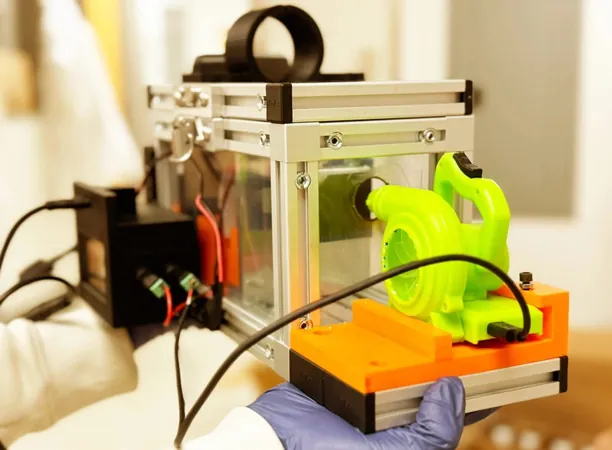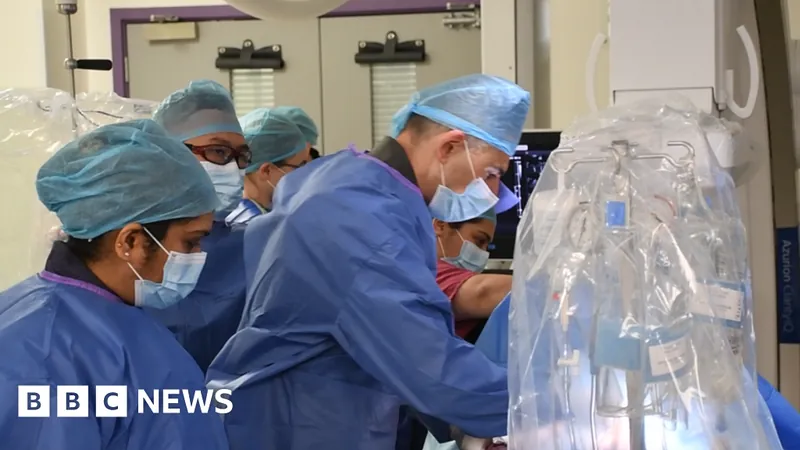
Transforming Pain: How One Stuntman's Journey Uncovered a Rare Disease
2025-01-18
Author: Benjamin
Introduction
When Ray Kohn, a seasoned stunt driver and mechanic, started experiencing persistent pain in his knees and elbows back in 2015, he initially dismissed it as just the toll of his physically demanding job. However, as the years rolled on, Kohn's condition deteriorated in alarming ways that transcended ordinary wear and tear.
Peculiar Changes and Struggles
Kohn began noticing peculiar changes: his head swelled to the point where he required a larger helmet, and his hands grew so large that he had to resize his wedding ring three times. This wasn’t just about appearance; his voice deepened, and dental issues surfaced as his teeth shifted, resulting in an underbite. Despite maintaining an incredibly active lifestyle, Kohn gained over 100 pounds, was perpetually ravenous, and was hindered by relentless pain.
Medical Journey and Diagnosis
As the years passed and with multiple cortisone shots failing to yield lasting relief, he underwent three knee surgeries and later procedures on his elbows, all to no avail. “I was falling apart, and I didn’t know why,” Kohn, now 47, lamented. It wasn’t until a dermatologist noticed distinct physical changes and ordered blood tests that he finally received a breakthrough. The results revealed alarmingly high hormone levels, prompting a referral to Dr. Divya Yogi-Morren, an endocrinologist specializing in pituitary diseases at the Cleveland Clinic.
A Life-Altering Diagnosis
“Just by looking at him and shaking his hand, I knew what he had,” Dr. Yogi-Morren revealed. After collaborating with her colleague, Dr. Varun R. Kshettry, they diagnosed Kohn with acromegaly—a rare disorder characterized by an excess of human growth hormone, often caused by a benign tumor on the pituitary gland.
The Serious Implications
The implications were serious. Without surgical intervention, Kohn's life was at risk. He recalled their grave advice: "If you don’t get this out of your brain, you’re going to die." Remarkably, despite the urgency of his situation, Kohn’s first question was whether he could continue performing stunt jumps post-surgery.
Understanding Acromegaly
Acromegaly is notorious for being difficult to diagnose due to its diverse symptoms, which can often be mistaken for other health issues. Dr. Alice Levine, an endocrinologist at Mount Sinai, explained how excess growth hormone stimulates the liver and elevates IGF-1, leading to not just physical changes but also serious health risks, including heart complications and pre-diabetes. Many patients experience a delay of six to ten years before a proper diagnosis due to the complexity of the condition.
Surgical Intervention
In Kohn’s case, an MRI confirmed the presence of a nine-millimeter tumor on his pituitary gland, prompting urgent surgical action. According to Dr. Levine, about 90% of patients successfully stop the overproduction of hormones post-surgery. However, even with surgical success, corrective surgeries may be necessary to address any irreversible physical changes incurred during the years of untreated acromegaly.
Life After Surgery
In June 2023, after facing his fears about brain surgery—despite his extensive stunt work experience—Kohn underwent an eight-hour operation. The recovery was challenging, but the results were life-altering: he lost over 100 pounds within a year and began to regain a sense of normalcy.
Ongoing Journey and Reflections
In the following months, his follow-up appointments reflected progress. Kohn mentioned looking forward to awaiting further corrective surgeries for his knees and jaw as part of his ongoing treatment journey.
Gratitude and Resilience
Grateful for the diagnosis that altered his life, Kohn expressed appreciation to the dermatologist who first took his concerns seriously. He found joy in returning to the stunts he once feared he'd lost forever, describing the experience as feeling “reborn” and deeply fulfilling.
Conclusion
Kohn's story is a poignant reminder of the body’s signals and the importance of persistent advocacy for one's health. In a world where many often overlook subtle changes, his journey has not only raised awareness about acromegaly but also highlights the remarkable resilience of the human spirit when faced with daunting challenges.









 Brasil (PT)
Brasil (PT)
 Canada (EN)
Canada (EN)
 Chile (ES)
Chile (ES)
 Česko (CS)
Česko (CS)
 대한민국 (KO)
대한민국 (KO)
 España (ES)
España (ES)
 France (FR)
France (FR)
 Hong Kong (EN)
Hong Kong (EN)
 Italia (IT)
Italia (IT)
 日本 (JA)
日本 (JA)
 Magyarország (HU)
Magyarország (HU)
 Norge (NO)
Norge (NO)
 Polska (PL)
Polska (PL)
 Schweiz (DE)
Schweiz (DE)
 Singapore (EN)
Singapore (EN)
 Sverige (SV)
Sverige (SV)
 Suomi (FI)
Suomi (FI)
 Türkiye (TR)
Türkiye (TR)
 الإمارات العربية المتحدة (AR)
الإمارات العربية المتحدة (AR)